FLSA Changes and MN Pay Transparency
At MRA, we are always keeping up to date on legal changes occurring in the United States affecting compensation and human resources practices. Over the last few months, we have seen two changes that will impact most employers across Minnesota.
Changes to the FLSA Salary test
The Fair Labor Standards Act (FLSA) was initially passed federally in 1938. It was a landmark legislation introducing minimum wage, overtime pay, and child labor standards. While the law may not seem modern in 2024, it is foundational to employee protections and has been amended to keep up with market increases. In addition, salaries and duties tests have been implemented to ensure work is being defined appropriately as it relates to the FLSA requirements regarding exempt or nonexempt from overtime eligibility classifications.
In April 2024, the Department of Labor finalized changes to the FLSA salary test with two deadlines. The first deadline is July 1, 2024, which increases the base salary threshold from $35,568 per year ($684 per week) to $43,888 per year ($844 per week). The second deadline is January 1, 2025, increasing the base salary threshold to $58,656 annually ($1,128 per week). The annual compensation requirement for highly compensated employees will also increase to $151,164. On July 1, 2027, the threshold will increase again, with another increase every 3 years.
To remain compliant, employers should review positions and determine if they still meet the duties test. Then, the salary test should be completed. This threshold indicates a dollar amount that employees’ salaries must be above, in addition to the duties tests, in determining exemption status. If an employee’s salary is below the FLSA salary threshold, they are automatically nonexempt from overtime eligibility.
The new salary threshold changes will often affect the FLSA status of paraprofessional jobs in the lower grades of your salary structures. MRA recommends getting ahead of the changes by testing your current employees’ salaries against the new threshold.
MN Pay Transparency Law
Pay transparency laws are becoming more prevalent within the United States. At this time, approximately 20 states have passed legislation with varying degrees of requirements. In the 2024 Minnesota legislative session, a new pay transparency law was signed. This law will require employers with 30+ employees to provide salary and benefits information on job postings, starting January 1, 2025.
Regarding salary information, either the current internal range or a “starting salary range,” which can be an abridged version of the current range, must be listed on all job postings. If a starting salary range is provided, it should not be lower than the current internal minimum, if available, and cannot be open-ended, so it must have a maximum listed. If no range is available, a fixed rate of pay must be included. These dollar amounts can be posted as salary or hourly rates, dependent on the FLSA overtime-eligible status.
The Minnesota pay transparency law differs from other states and local laws in some ways. Minnesota goes further than just base pay and requires benefits to be detailed in job postings. The inclusion of benefits allows potential candidates to approximate a total compensation offering.
If you need support to address the upcoming FLSA changes and pay transparency law, MRA can help you with compensation support, including FLSA reviews, market pricing, compensation structure design, benefits benchmarking, and pay equity studies.
For more information on MRA membership and services, contact Jan Edman, Member Relations Manager, jan.edman@mranet.org, or 763.253.9180.



